On a recent hike, I located a remote Geocache and posted it on my Instagram story. I’ve never really talked about it before, but Geocaching is something I have dabbled in for years.
A mini adventure for everyone, it’s a global scavenger hunt that anyone can participate in, and it’s quite fun!
It’s not something I’m actively doing every day like going to the gym, but I play.
I’ve only got around 100 caches found, so compared to others who have thousands, I’m a lightweight, but it is something I’ll fire up when I’m in a more unique area.
My Instagram story led to several questions as to what geocaching was, including from a random hiker who saw us opening it.
I also had a few people tell me that they’d been playing for a long time.
Some even made me aware of a different game that, while similar, is more low-tech, called Letterboxing.
I’ve yet to try Letterboxing so I can’t speak on it yet, but I do plan on checking it out this summer.
Until then, let us discuss Geocaching.
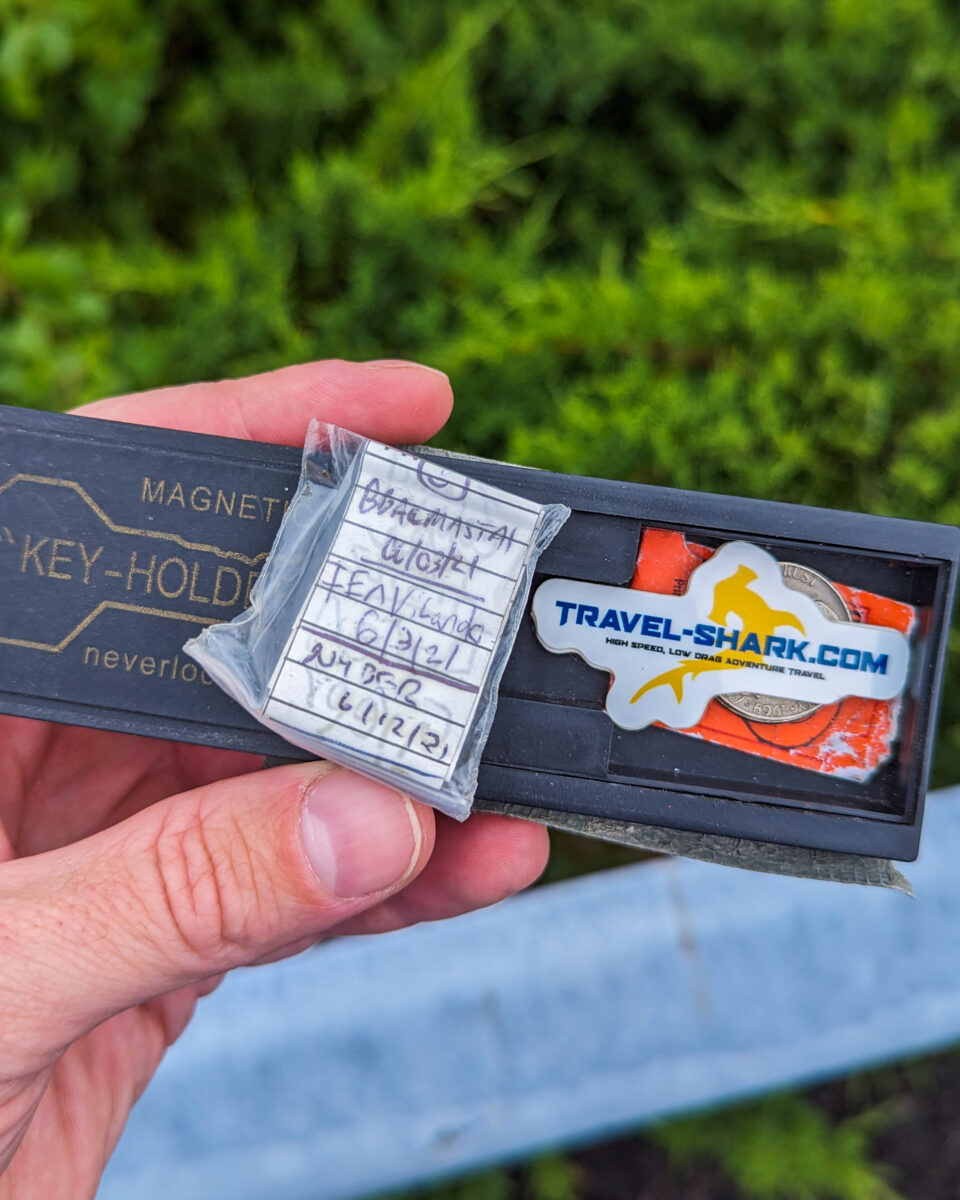
What is Geocaching?
So what is it?
Billed as the world’s largest treasure hunt, Geocaching is a global game that is played on a local level.
It’s an outdoor recreational activity, in which participants use a Global Positioning System receiver, mobile device, or other navigational techniques to hide and seek containers, called “geocaches” or “caches”.
How to Play
It’s the same game either way, but as most people don’t own Global Positioning Receivers, I’ll be focusing on the mobile device, which is what I use.
The App
First things first. You need an App. There are a few to choose from, but the one I use is the official geocaching.com app. You can find it here Android and Apple.
While the app is free to use, it only gives you access to geocaches of a certain level of difficulty. You’ll be able to see the other, higher-level caches, just not open them.
There is, however, a subscription option of $6.99 monthly or $39.99 yearly. These subscriptions will unlock every geocache around the world.
So f you’re just planning on trying it out or doing low-level caches (easier to find for numerous reasons), you’ll be able to manage with the free version.
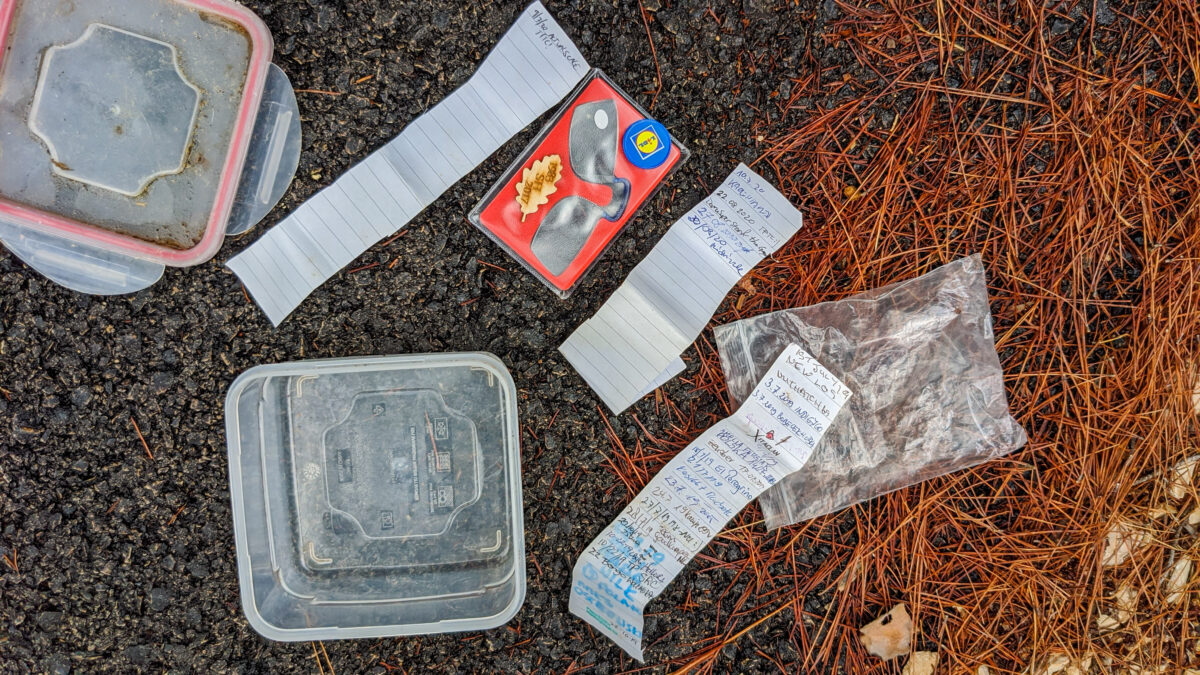
For harder caches, like the one I found on my hike at the top of Mt. Beacon, you’ll require a subscription to play.
I do have a subscription because the ones I’m most interested in finding are those that provide more of a challenge. Think top of a mountain vs. hidden inside a lamppost in a parking lot.
Navigating
Much like with Google Maps, the geocache app will center on your location where you’ll be able to see all of the Geocaches in the area. Or, if you’d like, you can search a specific area anywhere on the planet.
I recently checked Antarctica for example, and there are several, so I’m definitely hoping to find at least one of those depending on where I’ll be. Oh, have I mentioned I’m going to Antarctica?
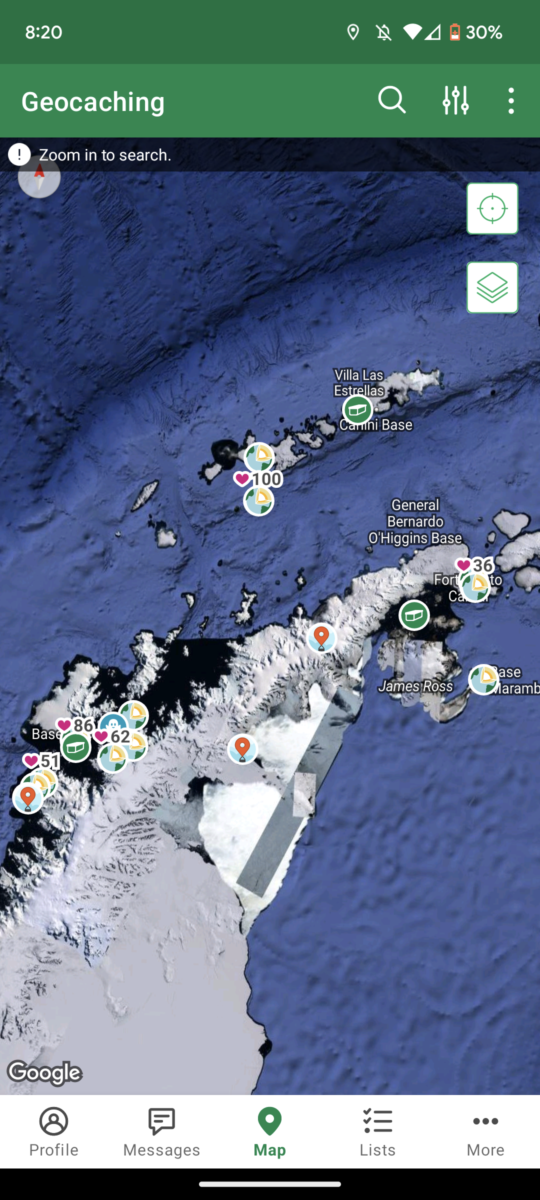
Next, you’ll select a cache that interests you and use the app to navigate to it.
It won’t give you turn-by-turn directions, but rather a straight line with a distance, so you may need to do more moving than it appears to get close.
This can make finding them on hiking trails more difficult because you might be looking at one that’s close, but on a completely different trail.
Once you’re close enough, you have a few options. You can use the app and go off of the distance alone (it gets down to the number of feet away you are, but it’s not always the most accurate) or you can read the description and hint for a better idea of the specific location.
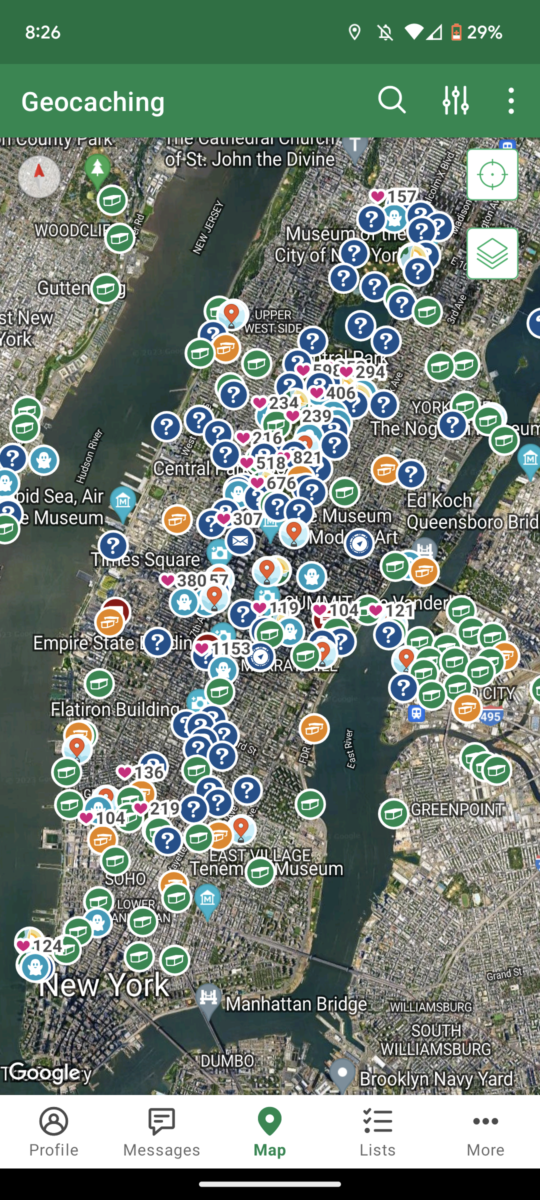
Geocaches in New York City. The question marks (?) are a type of cache that require some clue deciphering to find!
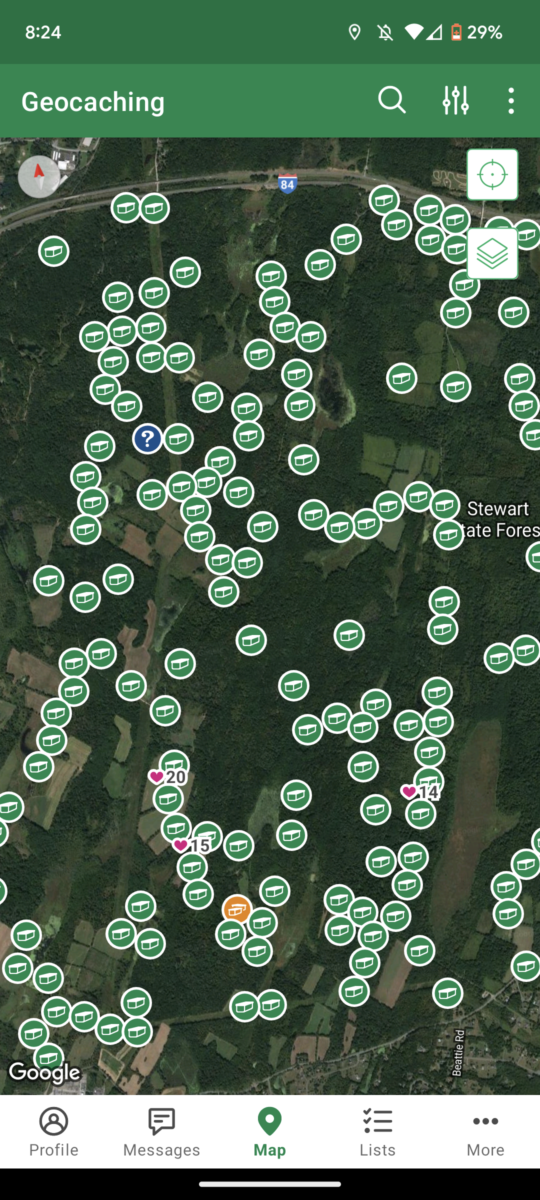
And a little closer to home, but still far enough away so you can’t see exactly where I live.
Depending on the size of the cache, you may need even more help.
If that’s the case, you can check the activity section where comments left by others will potentially be able to help you more.
This is done with more specific clues, nonchalant comments on the location, pictures, or straight-up spoilers.
Though not many people give up the exact location like that. i.e. “It’s attached to the bottom of the mailbox with a magnet.”
On more than one occasion I’ve matched features in a picture such as rocks with their real-world counterparts to figure out exactly where someone was standing when they photographed the cache.
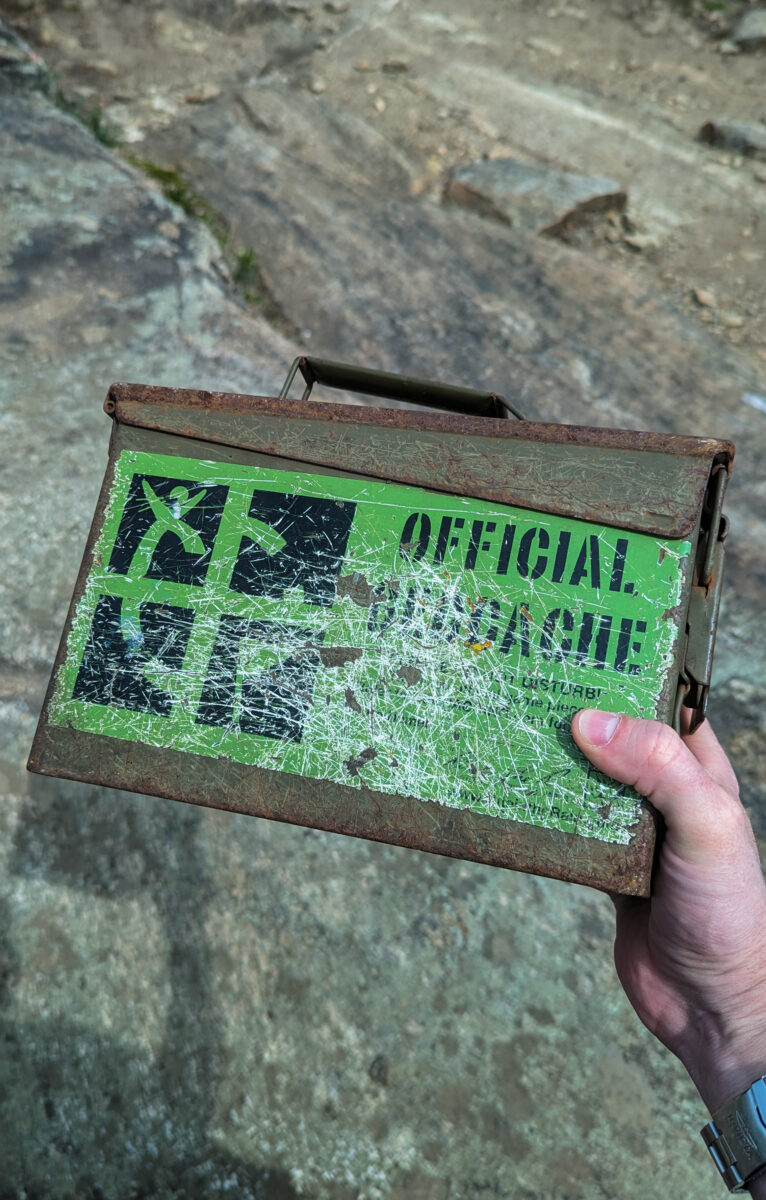
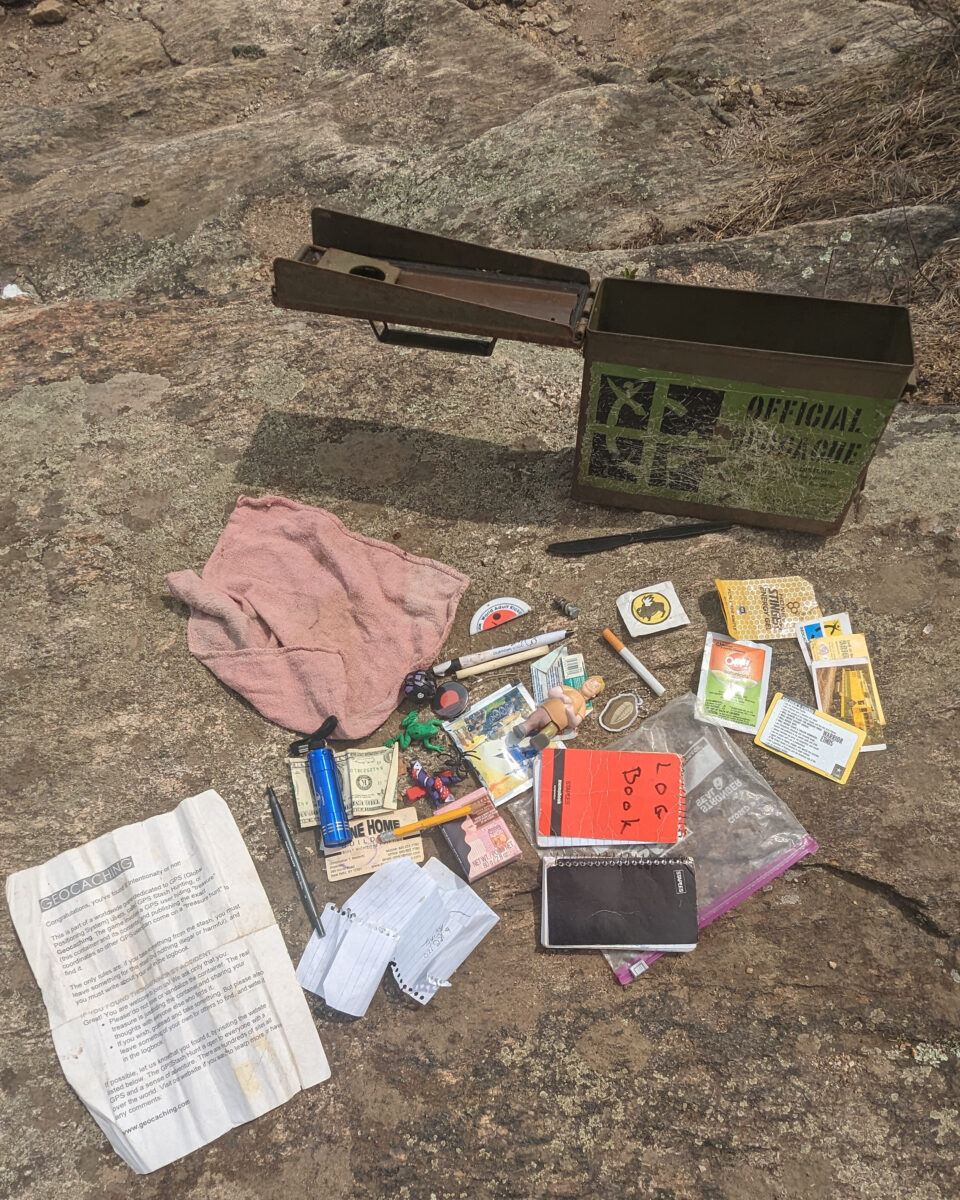
Success! (Hopefully.)
Geocaches come in all shapes and sizes.
To give you a better idea of what you’re looking for, the app will tell you the general size in the description. They range in size from something as small as a keychain pill box (described in the app as Micro) to large Tupperware or Ammo Boxes.
After you’ve found the geocache, you open it up, and inside you can find any number of things. The one mainstay, regardless of size, is the log. This is where you’ll sign your name along with the date you found it.
A micro cache usually contains a log and nothing else, while a large cache will have tokens and trinkets that people leave for others.
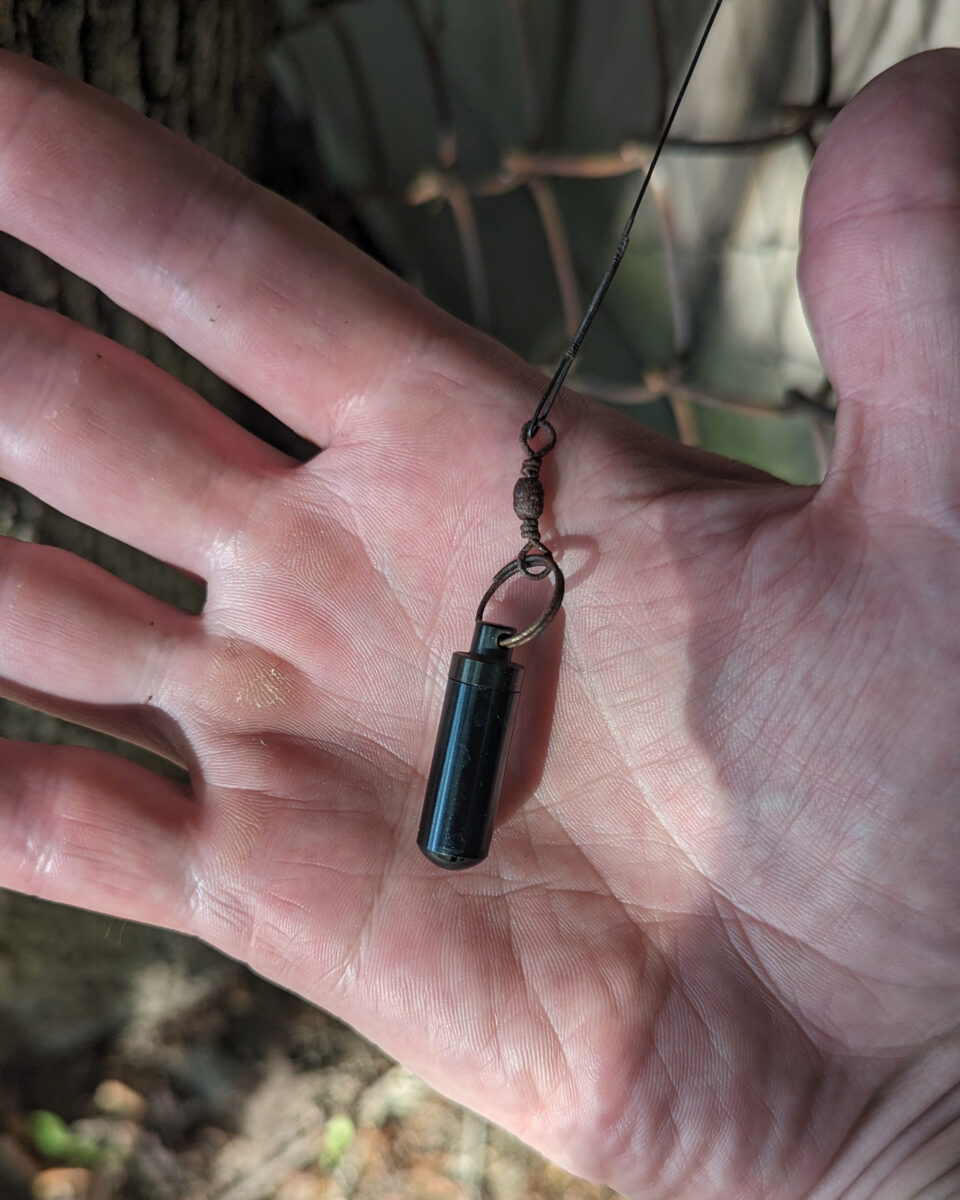
The saying is, if you take something, leave something. You’ll find everything from golf tees to toys. I even found a cigarette (a first) in my last one. Poor taste… kids play this game with their parents.
While I use to take something and leave it in the next one I’d find, I now usually leave travel-shark.com stickers.
Something else you may find, which are quite rare, are trackables. These are keychain-like medallions where the current location is logged. This allows people to see everywhere the trackable has been over the years. I’ve currently only found two of them.
Logging
After you’ve found it, and signed the log, you then log it in the app on your end where it will be added to the list of all the others you’ve found.
You’ll also have the opportunity to add a little comment of your own like your name, date, hints, photographs of your own, or something as simple as TFTC.
I usually write my name, the date, TFTC, and whether or not I left something.
Pat 5/14/23 TFTC Left some stickers.
or Pat 5/14/23 TNLN
Your found caches will then be displayed on your map as a yellow smiley face. Or, if you failed to find it, a blue frown will be displayed for DNF.
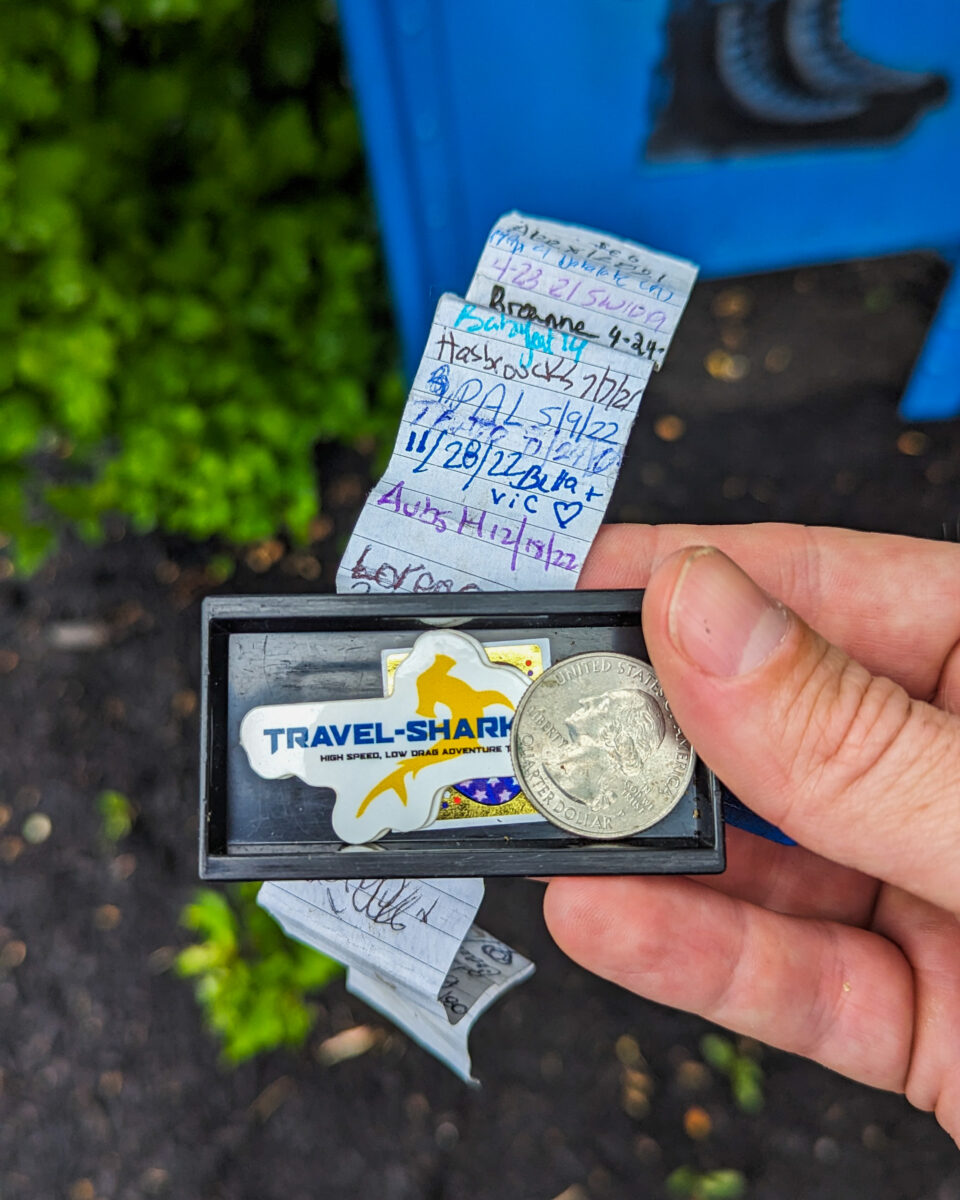
Geocaching terminology
There are a lot of Geocaching terms that you may hear, but some of the most common include things like:
TFTC – Thanks For The Cache
DNF – Did Not Find
FTF – First To Find
TNLN – Took Nothing Left Nothing
TSLS – Took something Left Something
BYOP – Bring Your Own Pen/Pencil (For the caches that are too small to contain one for logging purposes)
and…..
Muggle – A non geocacher. Based on “Muggle” from the Harry Potter series, which is a non-magical person.
People often get self-conscious if the cache is in a high-traffic area and don’t want people watching them. So you may see something on the app comments like, “DNF! Too many Muggles in the area!”
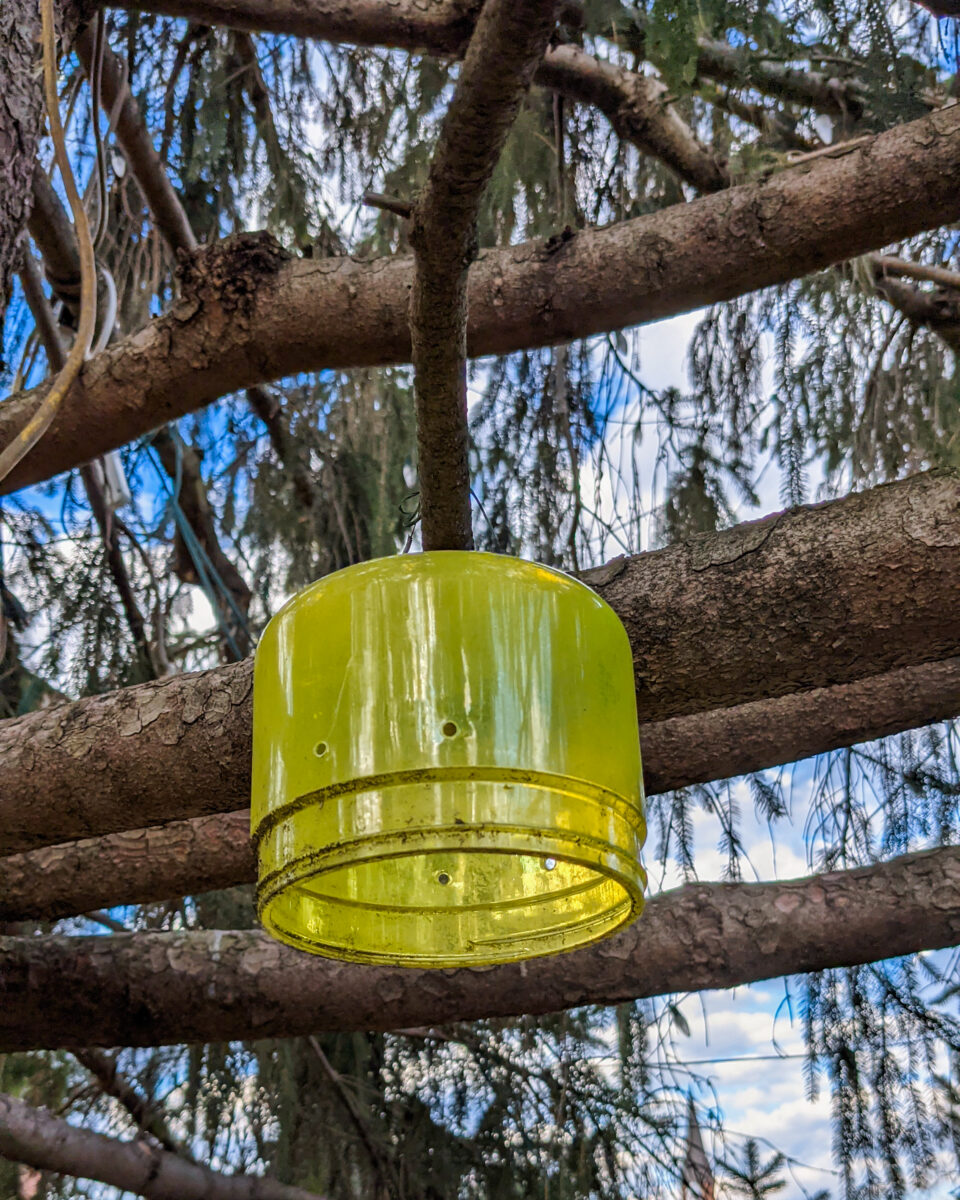
Geocaching is for everyone!
With over three million worldwide caches located in 184 different countries, Geocaching really is for everyone. What are your thoughts on it? Have you ever tried it? Is it something you’d be interested in trying?
DID YOU ENJOY THIS ARTICLE? PIN IT!
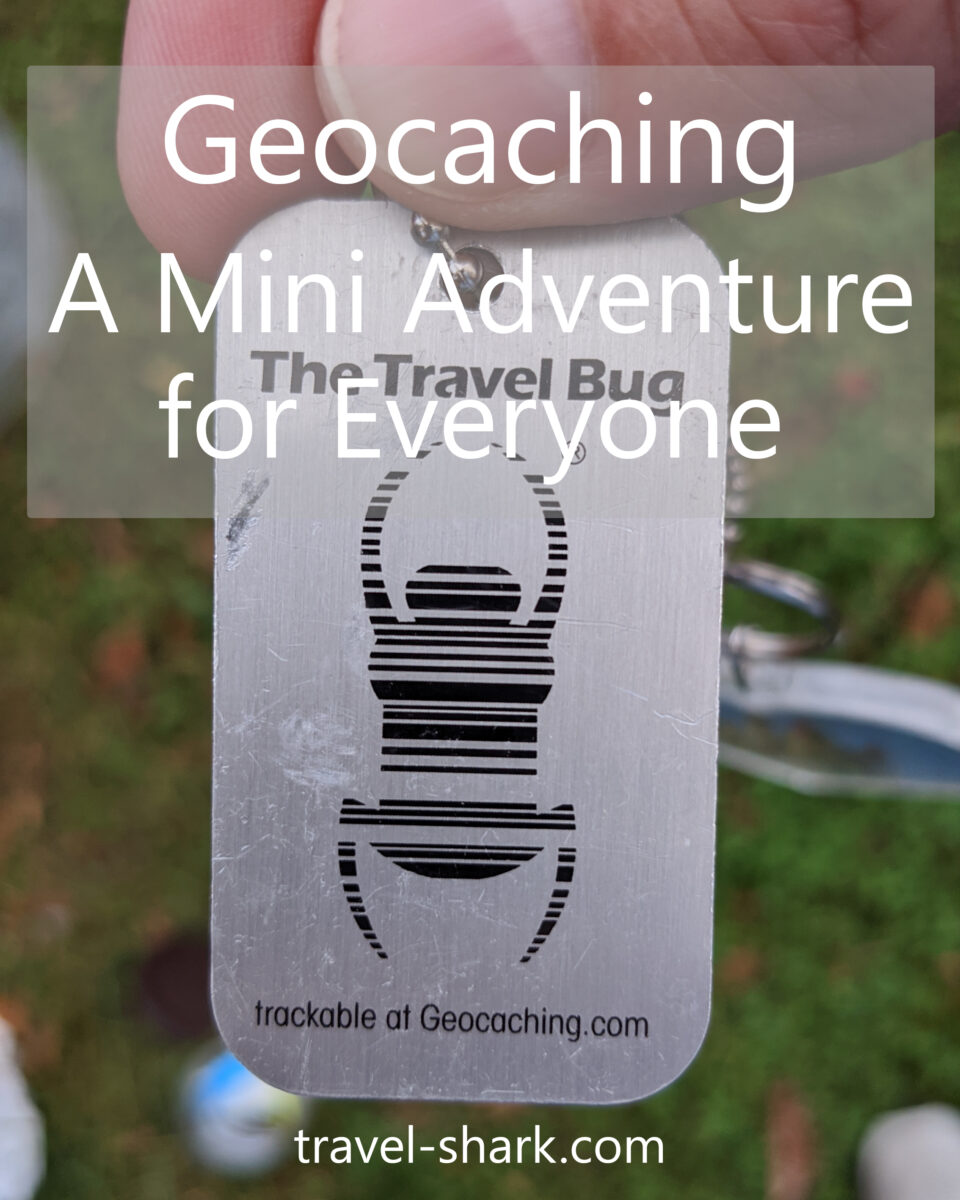

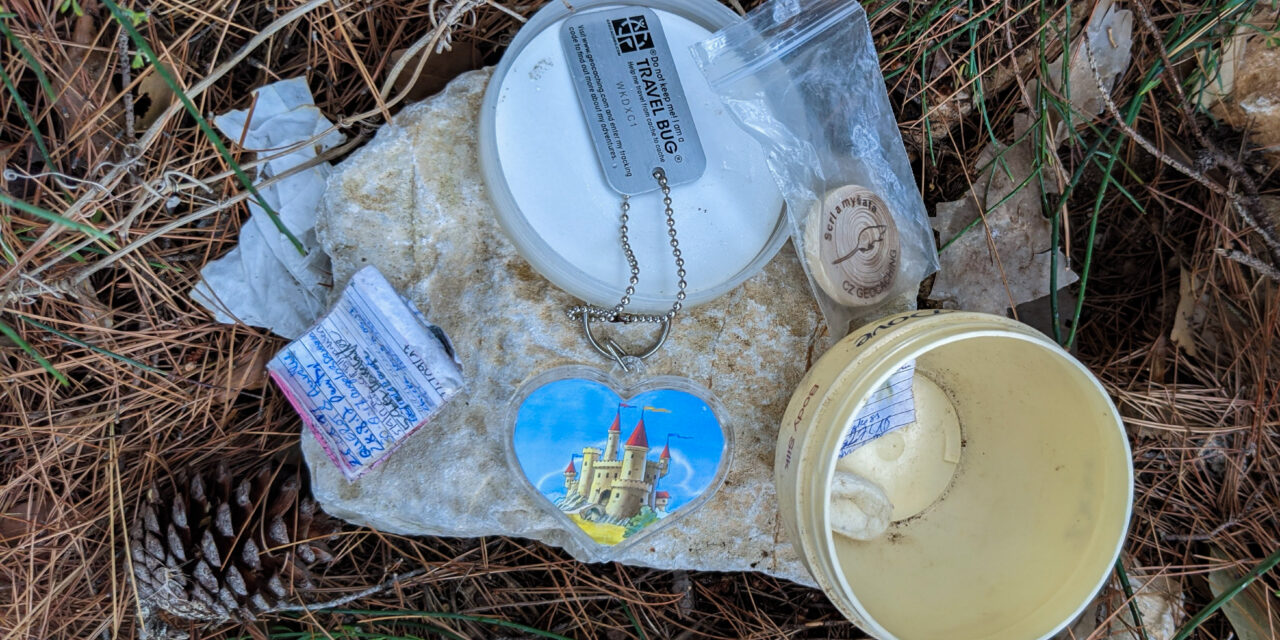
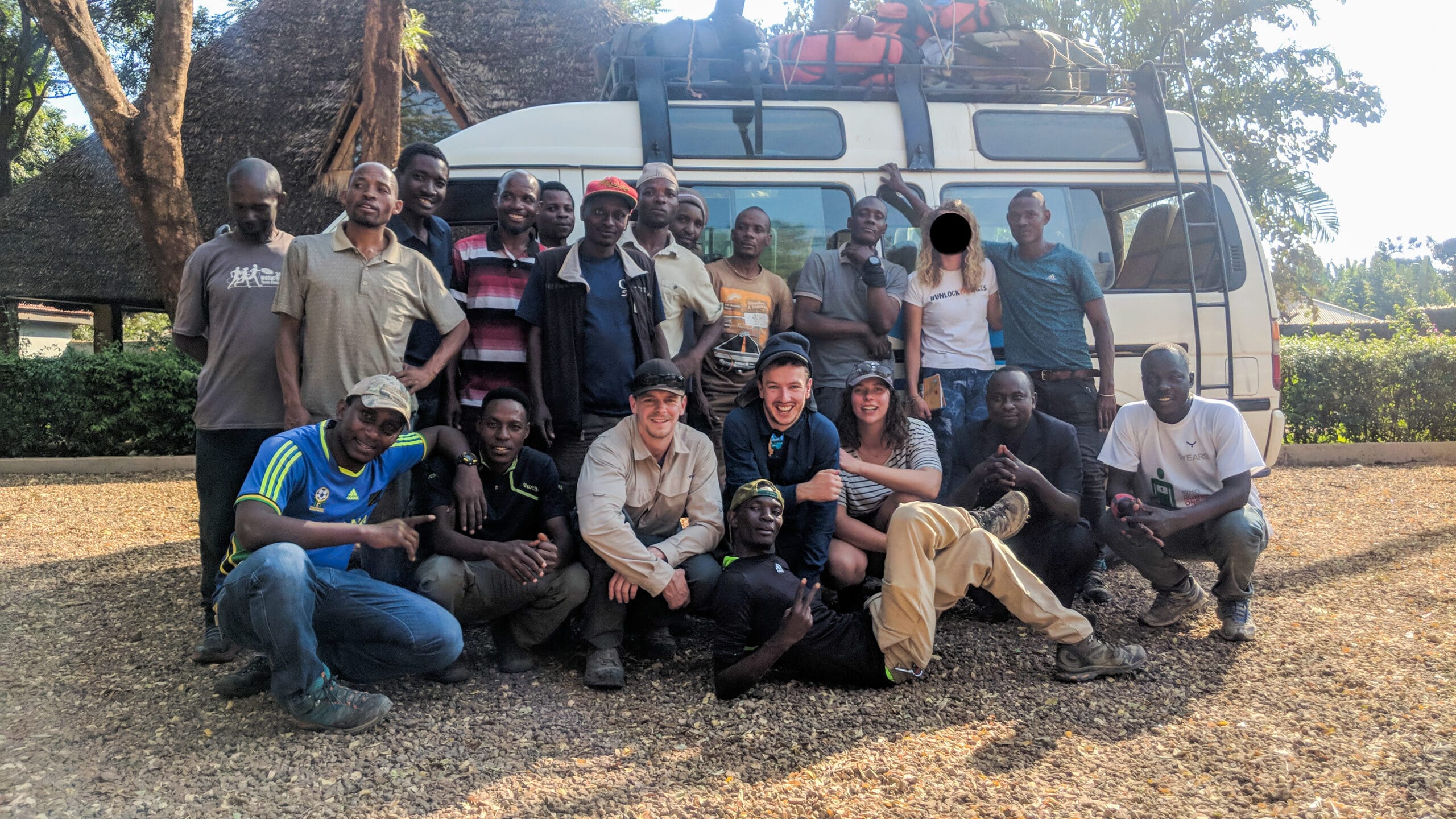
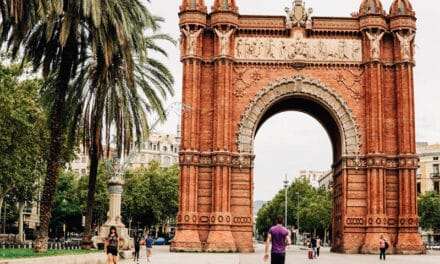
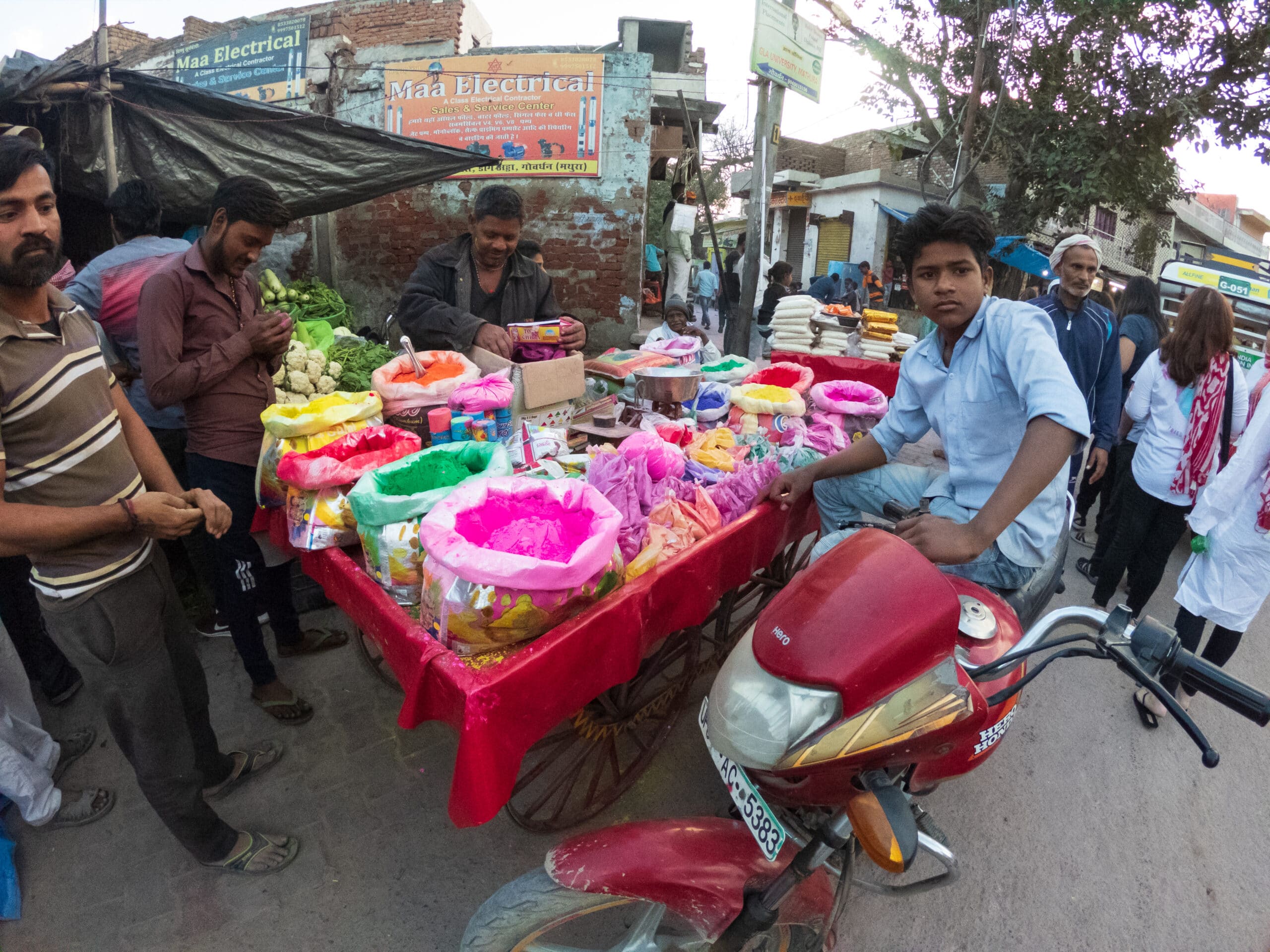


Will be on the lookout for your follow up post “Geocaching: Antarctica”!
(extra bonus feature: fewer muggles)
Ooooh I like that idea actually lol